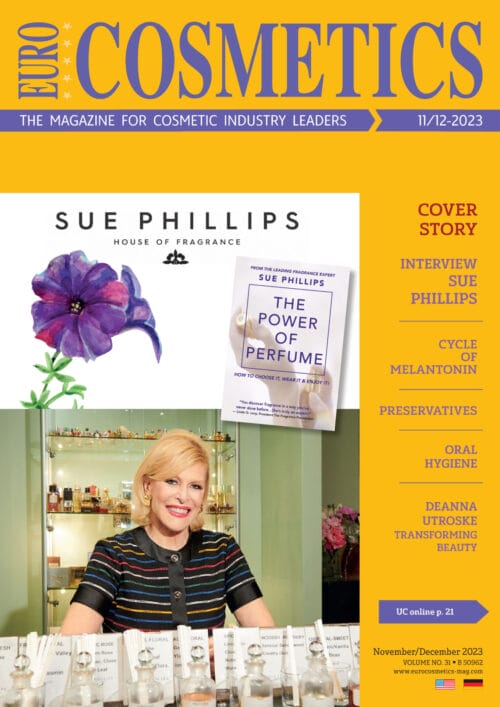
Over the next five years, the market for cosmetic preservatives is expected to grow quickly, surpassing USD 1.4 billion by 2024. Organic acids, phenol derivatives, paraben esters, alcohols, formaldehyde donors, and quaternary compounds are the six main divisions of that market. A number of important factors, such as a rise in the demand for “natural claims” preservatives, the development of new markets, and an increase in the use of phenol derivatives, can be credited for this anticipated growth in the global market.
More green preservatives, or preservatives based on synthetic expressions of natural materials, are now than ever before available to formulators. In addition to being ideal for consumers who want natural personal care and skin care products, the increased availability of natural claims preservatives is also advantageous for formulators who work to meet the ongoing demand for green products.
Similarly, it’s critical to note that, according to recent research, the demand for more organic preservatives like essential oils, herbs, and natural products like tea tree, rosemary, lavender, clove, and cinnamon is anticipated to increase and spur market growth by 2025.
An additional factor driving the anticipated expansion of the preservative market is a rise in hygiene and beauty practices in Asian markets, particularly in China, India, and other Southeast Asian nations. The preservative market is growing as a result of increased product purchases brought on by this awareness.
In particular, Asian Pacific nations are buying more sunscreen, lotion, and anti-ageing goods, all of which heavily rely on preservatives to keep their freshness, effectiveness, and shelf stability. The Asian region is predicted to control a larger share of the global preservative market in the years to come as a result of these purchasing trends, which are anticipated to last through 2025. By the year 2925, demand from nations like Italy, Spain, France, Germany, and the UK will give European countries the second-largest share of the market.
North, South, and Central America are anticipated to maintain their current market share of about one-third, with the United States continuing to be the region with the highest preservative usage and sales. Up until at least 2025, demand for personal care products and consequently for preservatives will increase vertically due to the growing global interest in maintaining good skin, hair, and nail hygiene.
Recently, phenoxyethanol, a glycol ether and one of the phenol derivatives has gained popularity as a paraben alternative or substitute. Additionally, phenol derivatives can be used as stabilizing agents in a wide range of goods, such as shampoos for hair, lotions, creams, and after-sun ointments for skin, as well as fragrances and perfumes.

How do preservatives work in cosmetics?
Antimicrobials prevent molds, yeasts, and bacteria from growing. Antioxidants prevent the browning, rancidity, and development of black spots in personal care products. You might not get sick from using rancid personal care products, but they might smell bad or have a strange colour or consistency. The reaction that takes place when a product’s ingredients combine with oxygen in the presence of light, heat, and some metals is suppressed by antioxidants. Antioxidants also reduce the harm done to some materials or ingredients that are particularly vulnerable to oxidative damage.
Types of preservatives
Two main types of preservatives used are synthetic and natural preservatives.
Synthetic Chemical Preservatives – According to the EU Cosmetic Directive, preservatives are substances that are exclusively or primarily intended to prevent the growth of microorganisms in cosmetic products. The selection of these preservatives as components in cosmetics must adhere to the Cosmetic Regulation’s Annexes, particularly Annex V (Article 14 of the Cosmetic Regulation). Preservatives are currently combined with other substances to increase antimicrobial activity, broaden the scope of that activity, and decrease the risk of toxicity and microorganism resistance.
Examples of synthetic chemical preservatives include the alkyl esters of p-hydroxybenzoic acid (Parabens), Phenoxyethanol, or 2-phenoxyethanol, Diazolidinyl urea (germall II, DU), imidazolidinyl urea (germall 115, IU), etc. Due to their physical characteristics – odourless, pH-neutral, and incapable of affecting cosmetic mass colour – parabens are appropriate for use in formulations for cosmetic products. Parabens are also the most widely used preservatives.
Natural Chemical Preservatives – In cosmetics, plant extracts and essential oils are popularly included for their remarkable properties. These natural ingredients offer a wide array of benefits, including antioxidant, anti-inflammatory, and antimicrobial properties. They also act as emollients, dyes, and humectants, aiding in wound healing and reducing skin discolouration. Additionally, they are known for their anti-mutagen and anti-ageing effects, while also acting as protective agents against UV-B damage.
Natural products are unprocessed, microencapsulated, or carried by nanostructured carriers. Due to their loss of activity in dilutions, pH dependence, volatility, and lipophilic properties (essential oils), as well as their potent odour (essential oils), their application as antimicrobials in cosmetic preparations is frequently discouraged. These characteristics can make them highly inadequate or undesirable for some kinds of products.
Essential oils obtained from tea tree (Melaleuca alternifolia), thyme (Thymus vulgaris), lemon grass (Cymbopogon citratus), oregano (Origanum vulgare), rosemary (Rosmarinus officinalis), etc. serve as natural preservatives.
Multifunctional Ingredients – Each ingredient is included in the cosmetic formulation for a specific purpose, but it can also have additional effects (such as antimicrobial activity) at the same time, making it a multifunctional ingredient. These ingredients have been used as antimicrobial preservatives in place of traditional preservatives in the sense of self-preservation.
Examples of ingredients with multiple uses include chelating agents, surfactants, humectants, and phenolic compounds. Chelating substances, such as EDTA (ethylenediaminetetraacetic acid), GLDA (glutamic acid), N, N-diacetic acid, lactic acid, citric acid, and phytic acid, make cell membranes more permeable and susceptible to antimicrobials.
The 1,2-diols (butanediol to octanediol, primarily caprylyl glycol) are surfactants with antimicrobial properties. Because of their amphiphilic nature and average molecular size, they exhibit viscosity modulation properties in addition to their antimicrobial properties.
Are preservatives safe for us?
Preservatives often have low molecular weights, which can lead to reactions like sensitivity when using cosmetics. The cosmetics industry is generally very concerned about finding safe and effective substances. The risks and safety aspects also must be taken into account when handling antibacterial agents during production. The manufacturers, however, occasionally fail to adhere to the permitted concentrations of preservatives.
Safe preservatives include those that have been approved for use in cosmetic and personal care products. Strict EU safety regulations must be met before any preservative is permitted to be used in cosmetics and personal care products. Just as some people develop allergies to nuts, nickel, pollen, seafood, etc., a very small percentage of people may experience allergic reactions to specific preservatives. Preservative allergies are uncommon, but when they do occur, people can identify and avoid products that contain preservatives by reading ingredient labels that comply with European legislation.
The US FDA regulates preservative-containing products under the cosmetic provisions of the law, and manufacturers are required to certify that they are safe for consumer use.
Cosmetic legislation related to preservatives
A positive list published by the European Union and Japan controls the use of preservatives, according to regulations. In the European Union, the Annex V of Regulation (EC) No. 1223/2009 of the European Parliament and Council on November 30, 2009, lists the approved preservatives at their highest concentration in ready-for-use preparation.
All preservatives permitted for use in cosmetics in Japan are listed in Annex 3 of the “Standards for Cosmetics” of the Ministry of Health and Welfare (No. 331 of 2000). There is no list of positive preservatives in the United States. The maker must conduct independent accountability for the security of cosmetics. The Cosmetic Ingredient Review (CIR) expert panel reviews and evaluates the safety of cosmetic ingredients. The CIR is a voluntary industry-funded independent panel of medical and scientific experts that meets four times annually to evaluate the safety of ingredients used in cosmetics using published literature.
At EURO COSMETICS, we try to bring you the latest advancements in the cosmetics and personal care industry coupled with insights from dedicated subject matter experts (SMEs). We spoke to two experts on their views on preservatives.

Dr Swati Gajbhiye, PhD in Industrial and Physical Pharmacy and Cosmetic Sciences, with a rich experience in pioneering novel formulations, delving into the cellular interactions of cosmetic actives through cell line studies, and meticulously scrutinizing the efficacy and safety of formulations, and working as a professor in cosmetic technology for over 5 years, states that, “The cosmetic industry is currently undergoing a significant change, moving away from using parabens due to concerns about their potential to cause cancer. As a response, manufacturers are now turning to advanced preservative blends that remain stable even at low temperatures and effectively combat a wide range of microorganisms at different pH levels.”
Judith Fiedler, Senior Director, Global Product Development, a graduate engineer in the cosmetics industry, a passionate innovator and regulatory expert in cosmetics, states that,
“Preservatives are crucial for guaranteeing the safety of cosmetics; however, their choice should be careful, taking into account the specific usage and circumstances. Thorough testing to assess their effectiveness against microbes is indispensable. It is encouraging to explore alternative preservative systems while keeping safety in mind. Multifunctional ingredients show promise, but caution is necessary, especially for sensitive skin types. Emphasizing minimal usage aligns with safety objectives, following Good Manufacturing Practices (GMP) and employing innovative packaging techniques further support these goals”.

Final Takeaway
In the world of cosmetics, the quest for safe and long-lasting products has led to innovative preservation strategies. Manufacturers have honed meticulous approaches, blending both synthetic and natural preservatives to ensure product integrity and safety. From parabens to plant-based extracts, a diverse range of preservatives is now employed. But that’s not all. The harmonious synergy of preservatives not only extends shelf life but also ensures cosmetics that are both alluring and safe, empowering consumers with the beauty that endures.



